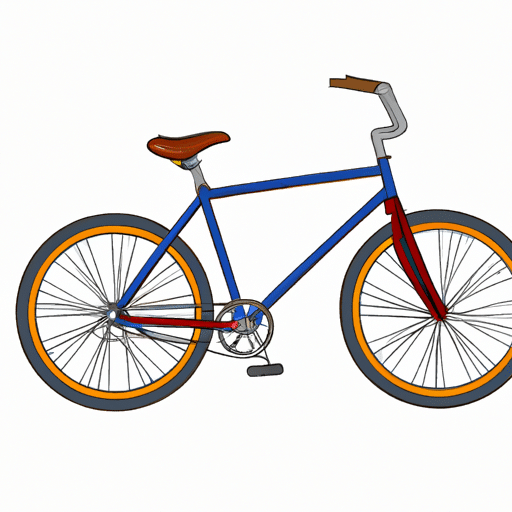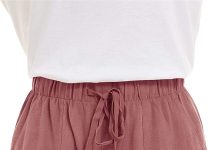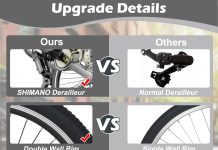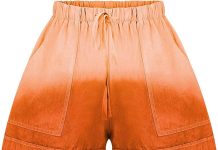Are you considering getting a cruiser bicycle but unsure about the right fit?
Look no further! This article will explore the key factors to consider for the perfect fit for your cruiser bike.
We’ve covered you with expert tips and advice from saddle height to handlebar positioning.
So, whether you’re a casual rider or a dedicated cruiser enthusiast, read on to discover how to find the ideal fit for your two-wheeled companion!
Table of Contents
Seat Height
Determining the correct seat height
When riding a cruiser bicycle, determining the correct seat height is crucial for comfort and efficiency. We need to consider a few factors to find the optimal seat height.
First, we should ensure that our feet can touch the ground comfortably when seated on the saddle. This will provide stability and allow us to reach the ground when coming to a stop quickly. Additionally, we should aim for a slight bend in our knees when our feet are on the pedals at the lowest position. This will prevent overextension and reduce the risk of knee injuries.
Importance of proper seat height
Having the proper seat height is not just about comfort; it also affects our pedaling efficiency. When our saddle is set at the right height, we can maximize our power transfer, allowing us to pedal more efficiently and with less effort.
On the other hand, if our seat is too low, we might experience discomfort in our knees and hips, and our pedaling motion will suffer. Conversely, if our seat is too high, we won’t be able to generate enough power, and our pedaling will become less efficient. Therefore, finding the ideal seat height is essential for an enjoyable and productive ride.
Handlebar Position
Choosing the proper handlebar position
The handlebar position on a cruiser bicycle significantly affects our overall riding experience. It affects our comfort, control, and steering capabilities. When choosing the proper handlebar position, we want to ensure that our arms and shoulders are relaxed and not strained.
Additionally, our handlebars should be at a height that allows us to maintain an upright riding posture, promoting a more comfortable and enjoyable ride. It’s also important to consider the width of the handlebars; we should choose a width that matches our shoulder width for optimal control and stability.
Adjusting handlebar height
We can adjust the height once we have determined the ideal handlebar position. Most cruiser bicycles come with adjustable stems or handlebars that can be raised or lowered according to our preference. If our handlebars are too low, we may experience neck, shoulders, or lower back discomfort. In contrast, if they are too high, we might struggle to effectively steer and control the bike. Making minor adjustments to the handlebar height allows us to find the perfect balance between comfort and control, ensuring an enjoyable riding experience.
Frame Size
Understanding frame size
When choosing a cruiser bicycle, finding the appropriate frame size is essential for a comfortable and safe ride. Frame size refers to the dimensions and proportions of the bicycle’s main frame. It typically correlates with the height and inseam measurements of the rider. A too-small frame can lead to cramped and uncomfortable riding positions, while a too-large frame may cause instability and difficulty handling the bike. Therefore, understanding frame size and its relationship to our body measurements is crucial when selecting a cruiser bicycle.
Choosing the appropriate frame size
We should consider our height and inseam measurements to determine the appropriate frame size for a cruiser bicycle. Most bicycle manufacturers provide size charts or guidelines correlating these measurements with their frame sizes. Following these guidelines, we can narrow our options and select a frame size that suits us best.
It’s important to note that different brands or models may have slight variations in their sizing, so it’s always recommended to test-ride the bicycle before making a final decision. Ultimately, choosing the appropriate frame size will ensure a more comfortable and enjoyable riding experience.
Foot Placement
Proper foot placement on cruiser bicycles
Proper foot placement is crucial for balance, control, and power transfer when riding a cruiser bicycle. The recommended foot placement on a cruiser bicycle is with the balls of our feet positioned on the pedals. This allows us to control the bike better while maintaining contact with the ground when needed.
Placing the balls of our feet on the pedals also ensures that we can engage the full power of our leg muscles when pedaling, resulting in a more efficient and powerful ride. Focusing on our foot placement can enhance our riding experience and make the most out of our cruiser bicycle.
Leg Extension
Achieving proper leg extension while pedaling
Proper leg extension while pedaling is critical to a comfortable and practical ride on a cruiser bicycle. An improper leg extension can lead to muscle strain, joint pain, and reduced pedaling efficiency. When our leg is fully extended at the lowest point of the pedal stroke, there should be a slight bend in our knee, typically around 25-35 degrees.
This range of knee flexion allows for optimal power transfer while preventing overextension and potential knee injuries. Achieving the correct leg extension involves adjusting the seat height or saddle position to ensure that our leg reaches the appropriate angle when pedaling.
Brake and Gear Lever Reach
Adjusting brake and gear levers for ideal reach
Proper adjustment of the brake and gear levers on a cruiser bicycle is crucial for safety, control, and riding comfort. The brake levers should be positioned within easy reach of our hands, allowing us to engage the brakes quickly and effortlessly.
Adjusting the brake lever reach involves loosening the lever clamp and sliding the lever closer or farther away from the handlebar to achieve the ideal position. Similarly, the gear shift levers should be positioned so that we can reach them comfortably without compromising our grip on the handlebars. By adjusting the brake and gear lever reach, we can ensure smooth and confident control of our cruiser bicycle.
Saddle Angle
Correcting saddle angle for comfort and efficiency
The saddle angle on our cruiser bicycle can significantly impact our comfort and riding efficiency. When the saddle angle is correctly adjusted, we can enjoy a stable and supportive seating position that minimizes pressure points and allows for better weight distribution.
Generally, the saddle should be level or slightly tilted downward at the front. A level saddle provides a balanced seating position, while a slight tilt downward can help prevent excessive pressure on sensitive areas. Experimenting with the saddle angle is essential to find the position that feels most comfortable and allows for efficient pedaling without unnecessary strain or discomfort.
Grip Position
Choosing suitable grip positions
Choosing the correct grip position on a cruiser bicycle is essential for maintaining a relaxed and comfortable riding posture. The grips should be positioned in a way that allows us to keep our hands and wrists in a natural and neutral alignment.
Typically, the grips should be wide enough to accommodate the width of our palms, allowing for a comfortable grip without gripping too tightly. Additionally, we can experiment with different handlebar grips or grip positions to find the one that suits us best. Some cruiser bicycles offer ergonomic grips that provide additional support and reduce hand fatigue during longer rides.
Maintaining a relaxed hand posture
Maintaining a relaxed hand posture and choosing suitable grip positions is essential for a comfortable and enjoyable ride. It’s crucial to avoid gripping the handlebars too tightly, as this can lead to hand fatigue and discomfort. Instead, we should aim to maintain a light and loose grip, allowing our hands to move freely and absorb shock during the ride.
By consciously relaxing our hands and avoiding excessive tension, we can enhance our overall riding experience and reduce the likelihood of developing hand or wrist pain.
Suspension Setup
Setting up the suspension for a smoother ride
Many cruiser bicycles have suspension systems to provide a smoother and more comfortable ride, especially on uneven or bumpy terrains. Setting up the suspension properly is crucial to optimize its performance and ensure a pleasant riding experience.
The suspension’s preload, rebound, and compression settings can be adjusted to match our weight, riding style, and the terrain we plan to ride on. Consulting the bicycle’s user manual or seeking professional assistance can help us adjust the suspension settings to our preferences and needs. By setting up the suspension correctly, we can enjoy a more controlled and enjoyable ride on our cruiser bicycle.
Accessories and Customizations
Adding accessories for personalization
One of the great things about owning a cruiser bicycle is the ability to personalize it with accessories. Accessories can enhance our riding experience and make our cruiser bike reflect our style and needs. Numerous accessories are available for cruiser bicycles, including baskets, cup holders, fenders, bells, and lights.
Adding accessories that cater to our specific preferences and requirements can make our rides more convenient and enjoyable. Whether we want to carry our belongings, stay visible during nighttime rides, or add a touch of personal flair, accessories are available to suit every need.
Considerations for customization
While customizing our cruiser bicycle with accessories can be fun and exciting, it’s essential to consider a few factors before making any modifications. Firstly, we should ensure that the added accessories do not compromise our safety or the bike’s performance.
Some accessories, such as fenders or baskets, can affect the bike’s aerodynamics or maneuverability if not installed correctly. Secondly, we should be mindful of the weight added to the bicycle, as excessive weight can make the bike feel sluggish and less responsive. Finally, we should choose accessories that complement our cruiser bicycle’s overall aesthetics and functionality, creating a cohesive and enjoyable riding experience.
In conclusion, achieving the perfect fit for a cruiser bicycle involves considering various factors such as seat height, handlebar position, frame size, foot placement, leg extension, brake and gear lever reach, saddle angle, grip position, suspension setup, and accessories.
Paying attention to these aspects and making necessary adjustments or additions can ensure a comfortable, safe, and enjoyable riding experience on our cruiser bicycle. Remember, finding the right fit is not just about functionality but also personalization and making our cruiser bike our own. So hop on your cruiser bicycle, make the necessary adjustments, and enjoy the open road with a smile!





































